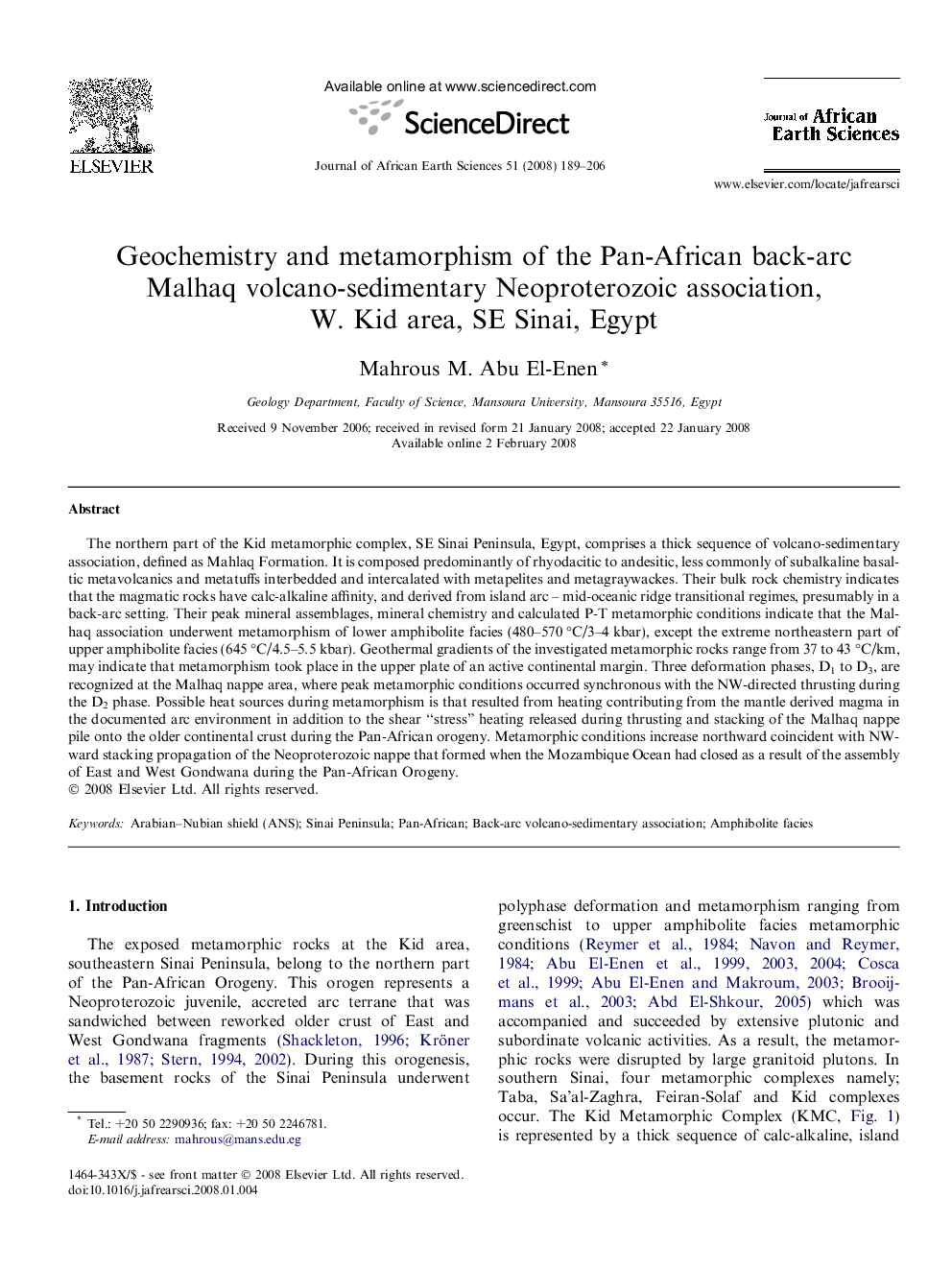| Article ID | Journal | Published Year | Pages | File Type |
|---|---|---|---|---|
| 4729381 | Journal of African Earth Sciences | 2008 | 18 Pages |
The northern part of the Kid metamorphic complex, SE Sinai Peninsula, Egypt, comprises a thick sequence of volcano-sedimentary association, defined as Mahlaq Formation. It is composed predominantly of rhyodacitic to andesitic, less commonly of subalkaline basaltic metavolcanics and metatuffs interbedded and intercalated with metapelites and metagraywackes. Their bulk rock chemistry indicates that the magmatic rocks have calc-alkaline affinity, and derived from island arc – mid-oceanic ridge transitional regimes, presumably in a back-arc setting. Their peak mineral assemblages, mineral chemistry and calculated P-T metamorphic conditions indicate that the Malhaq association underwent metamorphism of lower amphibolite facies (480–570 °C/3–4 kbar), except the extreme northeastern part of upper amphibolite facies (645 °C/4.5–5.5 kbar). Geothermal gradients of the investigated metamorphic rocks range from 37 to 43 °C/km, may indicate that metamorphism took place in the upper plate of an active continental margin. Three deformation phases, D1 to D3, are recognized at the Malhaq nappe area, where peak metamorphic conditions occurred synchronous with the NW-directed thrusting during the D2 phase. Possible heat sources during metamorphism is that resulted from heating contributing from the mantle derived magma in the documented arc environment in addition to the shear “stress” heating released during thrusting and stacking of the Malhaq nappe pile onto the older continental crust during the Pan-African orogeny. Metamorphic conditions increase northward coincident with NW-ward stacking propagation of the Neoproterozoic nappe that formed when the Mozambique Ocean had closed as a result of the assembly of East and West Gondwana during the Pan-African Orogeny.
